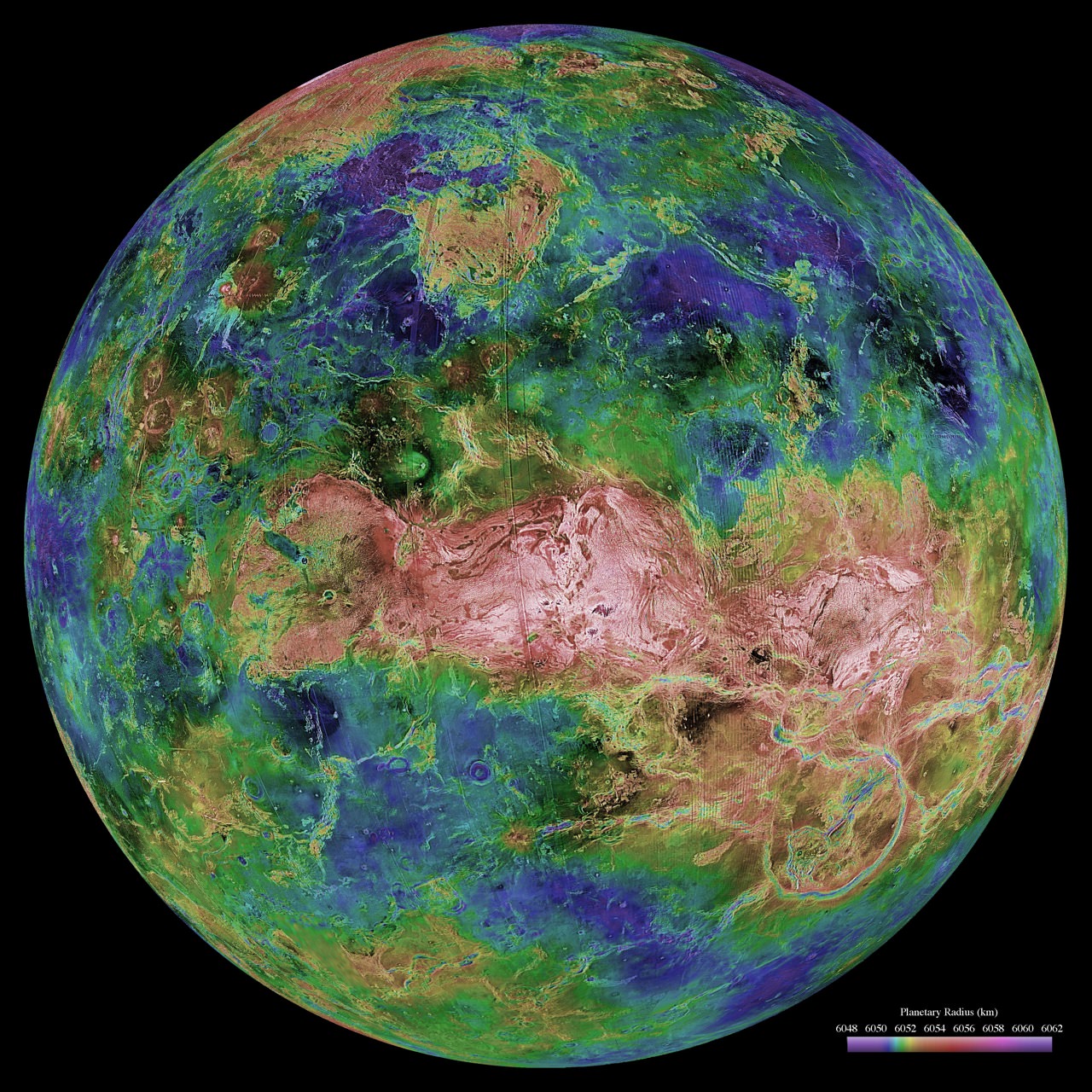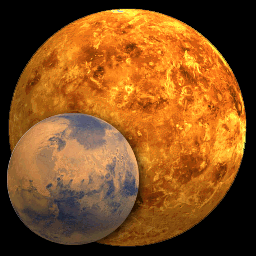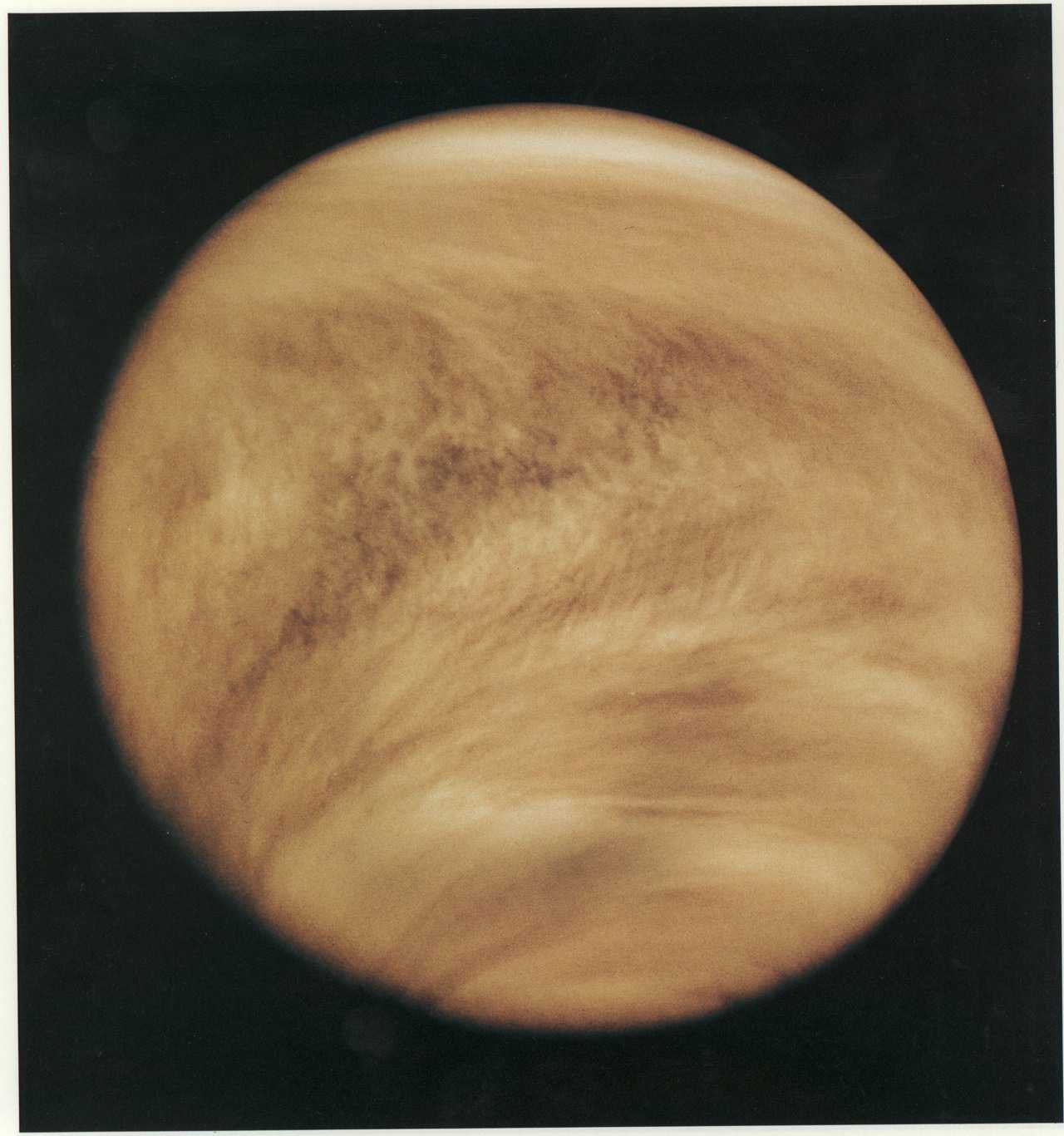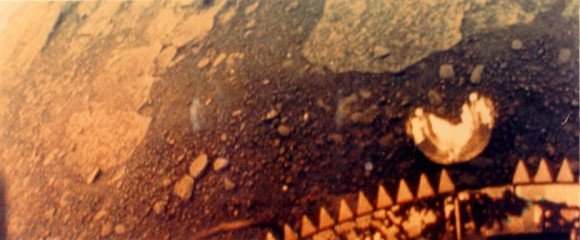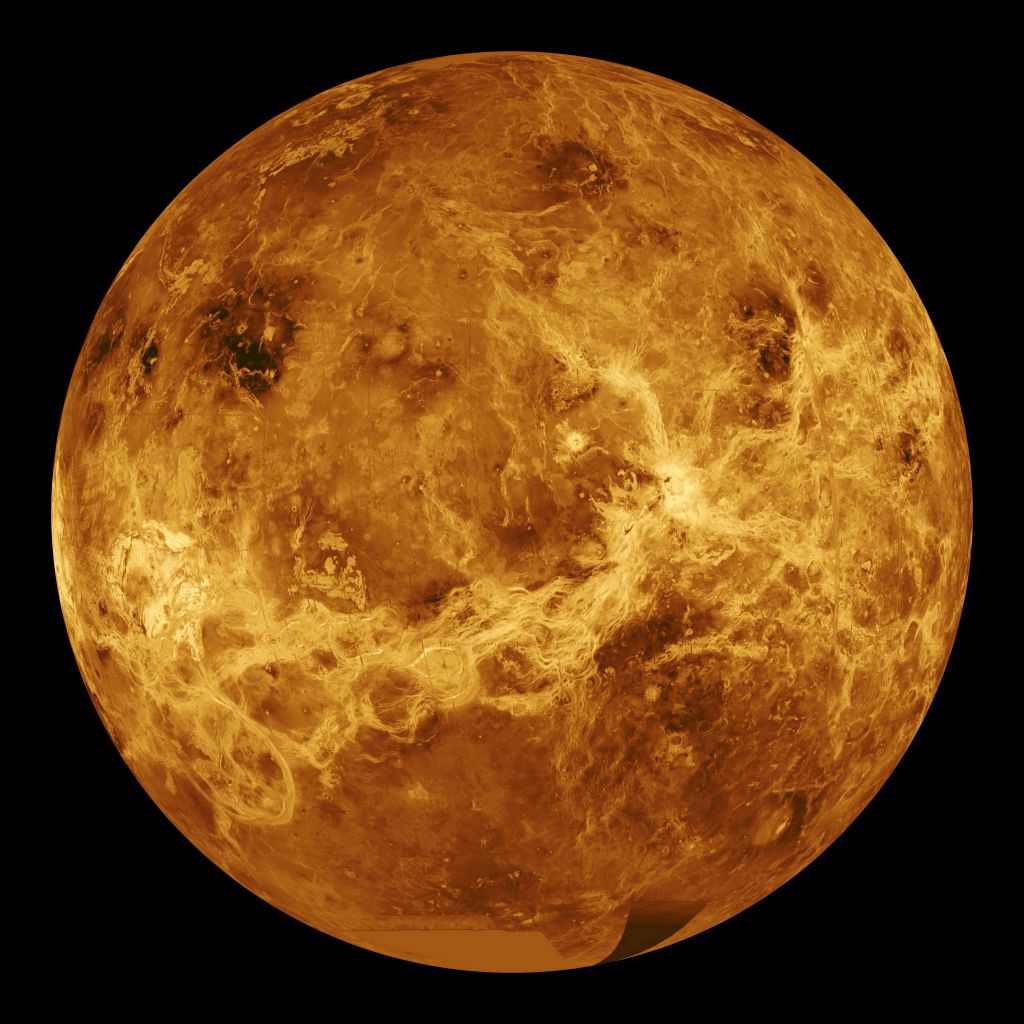The length of day on Venus is 243 Earth days. Read that again, it’s not a year, but the length of a single day. In fact, a year on Venus is only 224.7 days, so a day on Venus is longer than its year. And things get even stranger. Venus rotates backwards. All of the planets in the Solar System rotate counter-clockwise when you look at them from above. But Venus turns clockwise.
Of course it’s impossible to stand on the surface of Venus and survive. And even if you could, you wouldn’t be able to see the Sun through the dense clouds. But if you could stand on Venus and see the Sun, you’d see the Sun rise in the West, pass through the sky for 116.75 days and then set in the East. That’s the opposite of what we see here on Earth.
Why does Venus rotate backwards? Astronomers aren’t sure, but it’s possible that Venus suffered a massive impact from a large planetoid billions of years ago. This could have given the planet a kick that set it slowly tumbling, eventually flipping completely over so that it’s now upside-down.
We’ve written many articles about day length for Universe Today. Here’s an article about the length of day on Mercury, and here’s an article about the length of day for all the planets in the Solar System.
If you’d like more info on Venus, check out Hubblesite’s News Releases about Venus, and here’s a link to NASA’s Solar System Exploration Guide on Venus.
We’ve also recorded an episode of Astronomy Cast all about Venus. Listen here, Episode 50: Venus.

